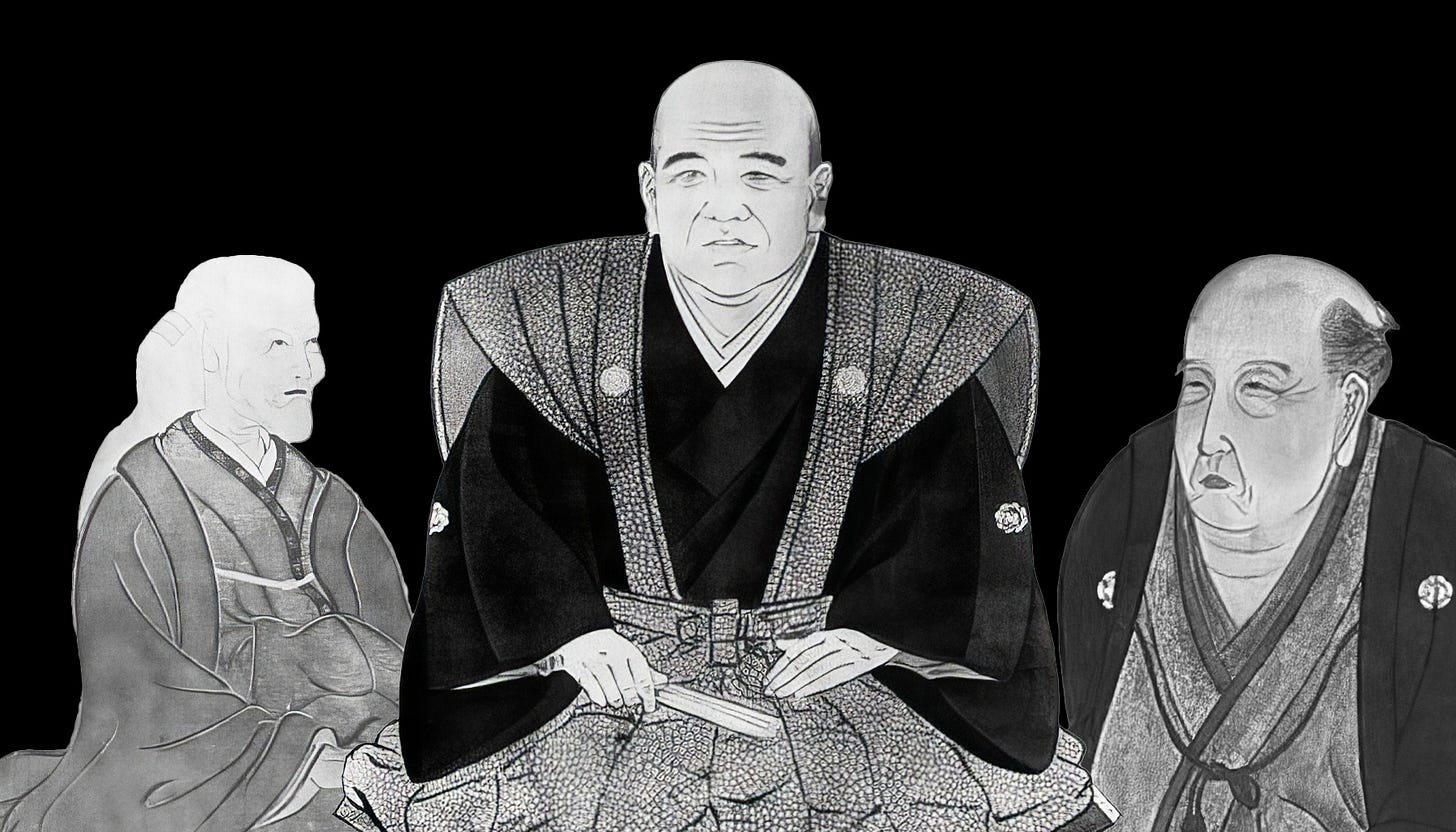The Rise of Japan’s New Religions and the Transformation of Shinto
Kurozumikyō, Tenrikyō, and Konkōkyō and Their Impact on Shinto’s Evolution
So far, we have explored the process by which Shinto became a formal, organized religion from the late Edo period into the early modern era. However, this is only one side of the story—the aspect of Shinto that was systematically codified. Naturally, there is a deeper spirituality that does not always show up in the public record.
What, then, was the form of Shinto that influenced this hidden sphere? By examining it, we can uncover the mysterious qualities many people today associate with Shinto. This article sets out the basics of another lineage that influenced the spirituality of modern Shinto—what were called “new religions.” Early examples of these new religions can be traced to three main currents.
First is Kurozumikyō, which began in 1814 in what is now Okayama Prefecture. Its founder, Kurozumi Munetada (1780–1850), was born into a family of Shinto priests who served at a local shrine.
Munetada’s life changed dramatically in 1812, when at age 33, his parents both died of illness in quick succession. Exhausted from nursing them, he himself contracted tuberculosis and, driven to despair, prepared for his own death.
On what he believed to be his final day, he prayed to the rising sun and had a sudden, profound inner experience—he instantly recovered from his illness in what he described as a mystical event.
On the winter solstice of 1814, again offering prayer at sunrise, Munetada reached a state of unity with the divine and attained enlightenment; he soon began propagating his teachings. Over the next 37 years, until his death, he delivered many oracles and was revered for healing the sick. His extraordinary abilities and altruistic nature garnered deep respect and a strong following. However, Kurozumikyō was formally established as a religious organization only in 1846.
Today, Kurozumikyō maintains around 300 centers and claims approximately 300,000 adherents.
Next is Tenrikyō, originating in what is now Nara Prefecture. In 1838, when Nakayama Miki (1798–1887), then 40 years old and a follower of the Jōdo school of Buddhism, invited a yamabushi (mountain ascetic) to pray for her ailing son’s recovery, she fell into a trance and suddenly began speaking in the voice of a kami.
From that point on, Miki delivered numerous oracles, healed illnesses, sold her possessions to aid the poor, and so on—actions that led many of her contemporaries, including her own relatives, to regard her as deranged.
It was only from around 1865, in her later years, that people began to gather around her in genuine faith. Crucially, this was a time of great upheaval as Japan transitioned into the Meiji era, leaving many uncertain and fearful for the future. Religion provided them with solace.
Though Tenrikyō views Nakayama Miki as its founder, the organization itself was not formally established until 1882—15 years after the start of the Meiji period—by her grandson, Nakayama Shinnosuke (1866–1914).
Despite having lost some of its earlier momentum, Tenrikyō became the most prosperous among these new religions. Today, it still operates roughly 14,000 centers and claims about 1.2 million adherents.
Nara Prefecture is home to Tenri City, effectively the only “religious city” in Japan to bear the name of a religious organization. Many followers still reside there, and it houses numerous religious facilities, shrines, lodgings, and even a university.
Lastly, there is Konkōkyō, which began in 1859 in Okayama Prefecture. Its founder was Akazawa Bunji (1814–1883), born into a farming family. At age 42 (in 1855), he fell gravely ill and was told by a doctor that there was no cure. Observing relatives praying fervently for his recovery, his own faith was awakened.
When he turned 46, he experienced divine possession and began to receive revelations, leading to numerous mystical experiences. In 1859, he decided to abandon farming to focus on missionary work and devoted himself to helping people in need.
Although Akazawa Bunji served as founder, Konkōkyō was formally established as a religious organization in 1885, slightly later than Tenrikyō. Today, it maintains about 1,400 centers and around 350,000 adherents.
These three new religions, once splendid in their heyday, have since lost much of their influence. Nonetheless, their emergence represented a new movement breaking away from the traditional, closed-off structure of Shinto that had prevailed throughout the Edo period, and thus they left a significant mark.
As mentioned before, Shinto of that era was essentially monopolized by two lineages recognized by the shogunate—the Yoshida family (Yoshida Shintō) and the Shirakawa family (Hakke Shintō)—both headquartered in Kyoto. Any Shinto priest wishing to begin new religious activities needed approval from either of these two families.
Seeking to unify Shinto as a counterbalance to Buddhism—which was the most powerful religion at the time—Hirata Atsutane (1776–1843), a Kokugaku (National Learn) scholar, took the initiative in propelling Shinto into a new era.
Hirata, pivotal to understanding modern Shinto, was the founder of Restoration Shinto. Yet at the same time, he had a deep fascination with the spiritual realm beyond everyday life.
From this point forward, a major spiritual movement began taking shape as Japan moved into modernity.



